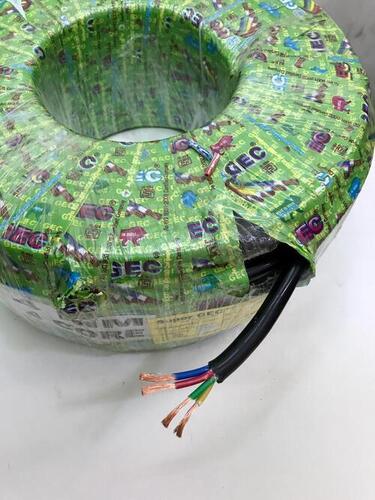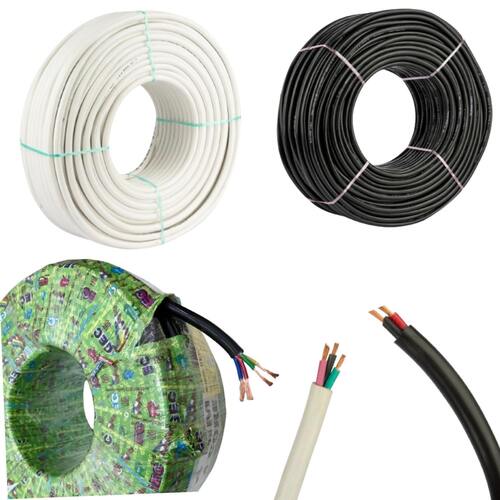Premium 6.0 mm x 2 Core Multi Round Core Wire
8815 INR/Roll
Product Details:
- Product Type Premium 6.0 mm x 2 Core Multi Round Core Wire
- Material CCR Copper
- Function Power Supply
- Usage Industrial / Domestic
- Voltage Surge 1100V
- Rated Current 11 Ampere (amp)
- Insulation Material FR PVC
- Click to View more
X
Premium 6.0 mm x 2 Core Multi Round Core Wire Price And Quantity
- 8815 INR/Roll
- 1 Roll
Premium 6.0 mm x 2 Core Multi Round Core Wire Product Specifications
- CCR Copper
- 6.0 mm x 2 Core
- 1100V
- 90 Meter (m)
- 11 Ampere (amp)
- 30+ Year
- Industrial / Domestic
- Power Supply
- Copper
- FR PVC
- Premium 6.0 mm x 2 Core Multi Round Core Wire
Premium 6.0 mm x 2 Core Multi Round Core Wire Trade Information
- 5000 Roll Per Day
- Days
- Yes
- Within a certain price range free samples are available
- Free
- All India
Product Description
| Submersible cables are specially designed electrical cables used in underwater applications. They are built to withstand the harsh conditions of immersion in water, often with protective layers to prevent water ingress and to maintain electrical insulation. Submersible cables find application in various industries, including offshore oil and gas exploration, marine research, underwater telecommunications, and renewable energy projects like offshore wind farms. Key features of submersible cables include: ISI (Indian Standards Institute): This indicates that the wire complies with the standards set by the Indian Standards Institute. These standards ensure that the wire meets certain safety and quality requirements. Water Resistance: Submersible cables are typically designed with materials and construction techniques that prevent water from entering the cable, ensuring reliable performance even when fully submerged. Durability: These cables are constructed to withstand the mechanical stresses encountered in underwater environments, such as pressure changes, currents, and potential impacts from marine life or debris. Corrosion Resistance: Given the corrosive nature of seawater, submersible cables often incorporate materials that resist corrosion, ensuring longevity and reliability in marine environments. Insulation: Electrical insulation is crucial to prevent short circuits and ensure the safety and reliability of electrical transmission underwater. Submersible cables use insulation materials capable of withstanding the conditions encountered underwater. Flexibility: Many submersible cables need to be flexible to accommodate installation in challenging underwater terrain or to withstand movements caused by currents or waves. Strength: Submersible cables may need to support their weight over long spans or resist tension during installation. They are designed with sufficient strength to handle these loads. |
Enter Buying Requirement Details







 Send Inquiry
Send Inquiry Send SMS
Send SMS Call Me Free
Call Me Free